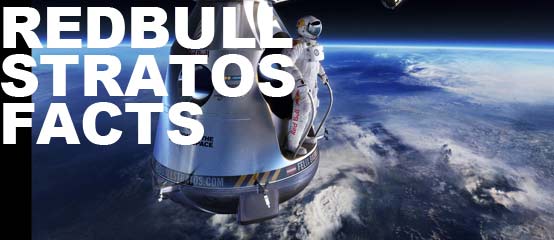
Women
We all know that women have two X chromosomes, one from their mother and one from their father. Every cell in a woman’s body contains both chromosomes, and in 1949, it was discovered that in every cell one of those chromosomes is inactive, whether it be the one from the mother or the one from the father. This means that most of the inactive chromosome’s genetic information is ignored. How the cells decide which chromosome to deactivate is still unknown. At first it was thought that the cell chose at random which chromosome to make inactive, however a study done on mice has shown that an entire organ is made up of cells with the same inactive chromosome. Meaning, the stomach could be the mother’s chromosomes, while the lungs could be the father’s. Also, X chromosomes contain versions of genes not found on its partner, and since women have two, this makes them more genetically diverse than men.
Animal Magnetoreception
Magnetoreception is the animal’s ability to perceive direction, altitude or location, by sensing magnetic fields. How they sense these fields is still a mystery. One theory is that the animals that have this ability, also have tiny bar magnets on some of their cells, working similarly to that of a compass, communicating with the brain. While still possible, this theory falls short. Research on pigeons found these bar magnets on some of their beak cells, however, it was found that these were immune system cells that don’t communicate with the brain. Another theory is that there is a protein in the eye that can sense magnetic fields. The science for this study is still new and it’s possible that both these theories could hold some truth.
Blushing
Researchers have known for some time that blushing is the result of widened blood vessels, what they don’t know is what triggers these blood vessels. Alpha-adrenoceptors are found in facial veins and in 1982 it was discovered that they also have beta-adrenoceptors, which are triggered by adrenaline and molecules associated with emotional response. To determine if they had actually found the cause, some experiments were done. One group was given drugs to block the alpha-adrenoceptors, and the other was given drugs to block the beta-adrenoceptors. At the end of the experiment, both groups were still blushing and research is back at square one.
Ice
The question about ice that has scientists perplexed is, why is it so slippery? One of the first theories was that our skates exert pressure, which lowers the melting point causing a thin layer of water on top of the ice. This theory was thrown out the window when it was discovered that we do not cause enough pressure for that to happen. The other two theories now floating around is that friction melts the ice, or the ice/air boundary continually has a thin layer of water. It’s possible that both are correct, as they each have experimental evidence.
Yawning
Why we yawn and why yawning is contagious, is a question that has yet to be answered. There were a few reasons about why we yawn that were discredited. One was that it was due to a lack of oxygen, the other was that yawns are contagious to build empathy between yawners. Scientists agree that we yawn more when we are tired, but it seems to be a little more complicated than that. One theory being that it regulates the temperature of the brain and keeps us alert in times of stress. They have determined that there are different causes and a variety of functions for yawns and that contagious yawning is more common among family and friends, than with strangers. They also found that changes in brain chemistry trigger yawns, that we yawn more during the summer season and that infants, and people with autism or schizophrenia aren’t affected by others yawning.
Memory
Researchers have discovered that our memories are stored in a scattered group of neurons, but how our brain retrieves those memories, is not understood. To recall memory, the correct assortment of neutrons have to be activated by the brain. Researches are still unsure if the brain pulls memory from those neutrons, or uses them to re-form the memory.
Gravity
There are four basic forces that hold the universe together, and gravity is the only one that still doesn’t make sense to scientists. Gravity is the weakest form in existence and when you start breaking it down to the level of atoms and molecules, gravity simply stops working. Quantum theory doesn’t help explain it and neither does general relativity. Each force is controlled by its own particle and gravity is the only one that has yet to be found. Currently, more information is known to explain evolution, than there is to explain gravity.
The “Bloop”
In 1997, the National Oceanic and Atmospheric Administration detected a sound in the ocean, that when sped up 16x, made a “bloop” sound. It was recorded by two separate microphones that were located 3000 miles apart from each other. When the wave pattern was studied, it was discovered that the noise was that of animal. The part that has scientists baffled is that there is no animal known to man, large enough to make that sound. There is no animal that even comes close.
Sleep
Harvard researchers have found that sleep is crucial for humans to form memories and to learn, with the brain either tossing out useless information or reinforcing information while we sleep. However, this is complicated by the fact that there are things out there considered to have no brain, which have regular dormant cycles. Also complicating matters, scientists have discovered a gene mutation that allows people to sleep only 2-4 hours a night, with no adverse effects. Another interesting fact on how crucial sleep is to humans, you will die of sleep deprivation before you will die of starvation. A lack of food and water will take weeks to kill you, while a lack of sleep can kill you in as little as 10 days.
The Bicycle
The bicycle has been around since the 19th century and in 200 years, not much has changed. Many have come up with equations on how the bicycle works, but ultimately it has scientists embarrassingly clueless. It was thought that the gyroscopic effect was key for a bike’s balance, but it proved to not be enough. One experiment found that a rider less bike will stay upright on its own, and at high enough speeds, can withstand a push from the side, but what it is that kept that and every other bike upright, still remains a mystery.





